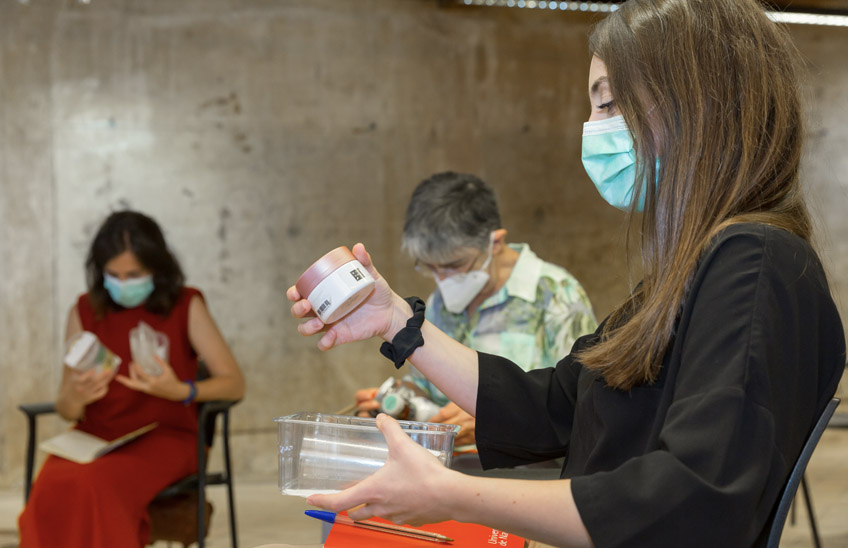Smart packaging and nanotechnology to improve food safety
A course organized by the Science Museum University of Navarra sample the main lines of research in packaging

PhotoManuelCastells/
30 | 07 | 2021
Improving food safety, preserving the quality and recording the conditions of the packaged food and extending its shelf life. These are the objectives pursued by research lines in food packaging that have been exposed in the course Plastic in food. New materialsorganized by the Science Museum of the University of Navarra at partnership with the Government of Navarra, in a new edition of the summer courses.
According to Leire Goñi Ciaurriz, a researcher at the development of the so-called intelligent packaging, active packaging, the design of edible coatings and the application of nanotechnology, explained the researcher at the School de Ciencias, Leire Goñi Ciaurriz. presentation "New consumer habits have led to an evolution in packaging: there is a demand for food that can be prepared quickly, packaging that allows movement, the movement of people, that extends the shelf life of food, that provides more information about the product, that is as natural as possible and that is environmentally friendly," said the researcher.
An intelligent package contains external or internal indicators that provide information about the history and/or properties and condition of the packaged food. An active package incorporates antioxidant, antimicrobial, etc. components that absorb or release substances that protect the food, extending its consumption deadline . Edible coatings technology consists of the application of a transparent, edible, biodegradable film that is structured around the food and acts as packaging without generating plastic waste. And nanotechnology improves the quality of the packaging: it improves moisture and temperature resistance conditions; and it protects the product. "Its development aims to provide a solution to the economic, ethical and environmental problem of wasting 1,300 million tons of food a year, as well as enabling an approach to the claims of the consumer in the modern world, with the packaging itself signaling the quality or the events that have marked the processing of the product and extending the shelf life of the product," added Leire Goñi.
Those attending the course were also able to learn about the types of plastics that wrap food and the recycling processes for these materials, which aim to obtain materials of optimum quality and purity in order to obtain new products. As explained by the teacher and course director, Itziar Vélaz, 41% of the plastic materials recycled in Spain are reused in construction materials (pipes, profiles, etc.); 22% goes to other markets (footwear, hangers), 14% is used in new packaging and another 9.5% is used in urban furniture.
"The first step to reduce plastic deposits in landfills through recycling is to separate them at source and this requires the partnership citizen and companies, "says Dr. Itziar Vélaz. Plastic bottles and containers, tin cans and beverage cans, yogurt containers, plastic bags, film, cosmetic and hygiene tubes and jars, metal lids, tetrabricks and packaging trays should be deposited in the yellow container. From there, a whole recycling process begins, which can be mechanical, chemical or energy recovery.
"All the material is transported to a plant, where it is separated by type. It is shredded, washed, dried and centrifuged. The material is then homogenized with a mechanical process to obtain a product of uniform color and texture and extruded into long filaments, which are cooled and cut into small pellets (pellets), which are stored in sacks as subject raw material for new applications. Depending on the quantity and diversity of additives in the original plastic, a recycled plastic of greater or lesser purity will be obtained. In this sense, the plastic we choose for our consumer products does not have to be the same for subject ," explains Vélaz. Chemical recycling is complementary to mechanical recycling and consists of depolymerizing the polymers in the starting units, purifying the original plastics and even obtaining industrially useful gases and fuels. Finally, there is the energy recovery process, which allows energy to be obtained in the form of heat and the generation of fuels.




